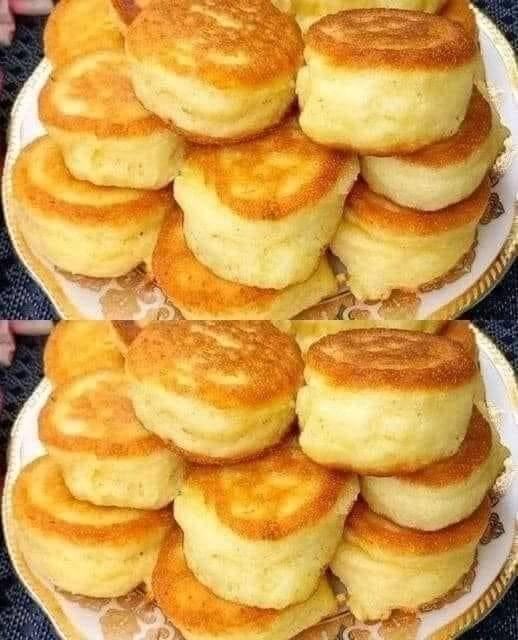The Ultimate Guide to Making Perfect Gluten-Free Pancakes
Pancakes are a beloved breakfast staple, and with the rise in gluten intolerance and celiac disease, the demand for gluten-free pancake recipes has surged. This guide will walk you through the steps to make the most delicious and fluffy gluten-free pancakes that everyone can enjoy. We will cover everything from selecting the right ingredients to perfecting the cooking technique.
Why Choose Gluten-Free Pancakes?
Gluten-free pancakes are essential for those with celiac disease or gluten sensitivity. Even if you don’t have these conditions, reducing gluten can aid digestion and promote a healthier diet. Our recipe ensures you don’t have to compromise on taste or texture, offering a delightful breakfast option for everyone.
Ingredients for Gluten-Free Pancakes
Essential Ingredients
To achieve the best gluten-free pancakes, start with high-quality ingredients. Here’s what you need:
- Gluten-Free Flour Blend: Opt for a blend that includes a mix of rice flour, tapioca flour, and potato starch. This combination mimics the texture of wheat flour.
- Baking Powder: Ensure it is gluten-free to help your pancakes rise and become fluffy.
- Sugar: Granulated sugar works best, but you can also use coconut sugar for a healthier alternative.
- Salt: A pinch to balance the sweetness.
- Eggs: They provide structure and moisture.
- Milk: You can use dairy milk or any plant-based milk like almond, soy, or oat milk.
- Butter or Oil: Melted butter or a neutral oil adds richness and moisture.
Optional Add-Ins
- Vanilla Extract: Adds a delicious aroma and enhances flavor.
- Cinnamon or Nutmeg: For a warm, spiced flavor.
- Fruit or Nuts: Blueberries, bananas, or chopped nuts for added texture and taste.
Step-by-Step Guide to Making Gluten-Free Pancakes
1. Preparing the Batter
Start by mixing your dry ingredients. In a large bowl, combine:
- 1 cup of gluten-free flour blend
- 1 tablespoon of sugar
- 1 tablespoon of baking powder
- 1/4 teaspoon of salt
In another bowl, whisk together the wet ingredients:
- 1 large egg
- 1 cup of milk (dairy or plant-based)
- 2 tablespoons of melted butter or oil
- 1 teaspoon of vanilla extract (optional)
Gradually pour the wet ingredients into the dry ingredients, stirring gently until just combined. Be careful not to overmix; a few lumps are okay.
2. Let the Batter Rest
Allow the batter to rest for about 5-10 minutes. This resting period lets the gluten-free flour hydrate fully, resulting in a better texture.
3. Preheat the Griddle
While the batter is resting, preheat your griddle or non-stick pan over medium heat. Lightly grease it with butter or oil.
4. Cooking the Pancakes
Using a ladle or measuring cup, pour about 1/4 cup of batter onto the hot griddle for each pancake. Cook until bubbles form on the surface and the edges look set, about 2-3 minutes. Flip the pancakes and cook for another 1-2 minutes, until golden brown and cooked through.
5. Serving Your Pancakes
Serve your pancakes hot with your favorite toppings. Popular choices include:
- Maple Syrup: The classic choice.
- Fresh Fruit: Berries, banana slices, or apple compote.
- Nuts and Seeds: For a crunchy texture.
- Yogurt or Whipped Cream: Adds creaminess and extra flavor.
- Nut Butters: Almond, peanut, or cashew butter for protein.
Tips for Perfect Gluten-Free Pancakes
1. Choosing the Right Flour Blend
Not all gluten-free flour blends are created equal. Look for one with a balance of rice flour, tapioca flour, and potato starch. These blends often provide the best texture and flavor. Some popular brands include Bob’s Red Mill, King Arthur Flour, and Cup4Cup.
2. Adjusting the Batter Consistency
If your batter seems too thick, add a splash of milk to thin it out. If it’s too runny, add a bit more gluten-free flour. The batter should be thick but pourable.
3. Controlling Heat
Cooking pancakes at the right temperature is crucial. Too hot, and they’ll burn on the outside while remaining uncooked inside; too cool, and they won’t brown properly. Medium heat is usually perfect.
4. Experimenting with Flavors
Feel free to customize your pancakes. Add a handful of blueberries, chocolate chips, or a sprinkle of cinnamon to the batter for a fun twist.
Health Benefits of Gluten-Free Pancakes
Gluten-free pancakes are not only delicious but can also be a healthier choice:
- Digestive Health: They are easier on the digestive system, especially for those with gluten sensitivity.
- Nutrient-Dense Ingredients: Using whole grain gluten-free flours like buckwheat or quinoa can increase fiber and protein content.
- Lower Glycemic Index: Some gluten-free flours have a lower glycemic index, helping to manage blood sugar levels.
Troubleshooting Common Issues
1. Pancakes Are Too Dense
This can happen if the batter is overmixed or if there’s too much flour. Make sure to mix just until combined and measure your ingredients accurately.
2. Pancakes Are Falling Apart
If your pancakes are not holding together, it might be due to insufficient binding agents like eggs. Ensure you’re using fresh eggs and consider adding a bit of xanthan gum if your flour blend doesn’t contain it.
3. Uneven Cooking
Ensure your griddle is preheated evenly before cooking. Also, avoid overcrowding the pan, as this can lower the temperature and cause uneven cooking.
Conclusion
Making gluten-free pancakes that are fluffy, delicious, and satisfying is entirely possible with the right ingredients and techniques. By following this comprehensive guide, you can enjoy a classic breakfast treat without compromising on taste or texture. So, gather your ingredients, fire up the griddle, and enjoy a stack of perfect gluten-free pancakes today!
